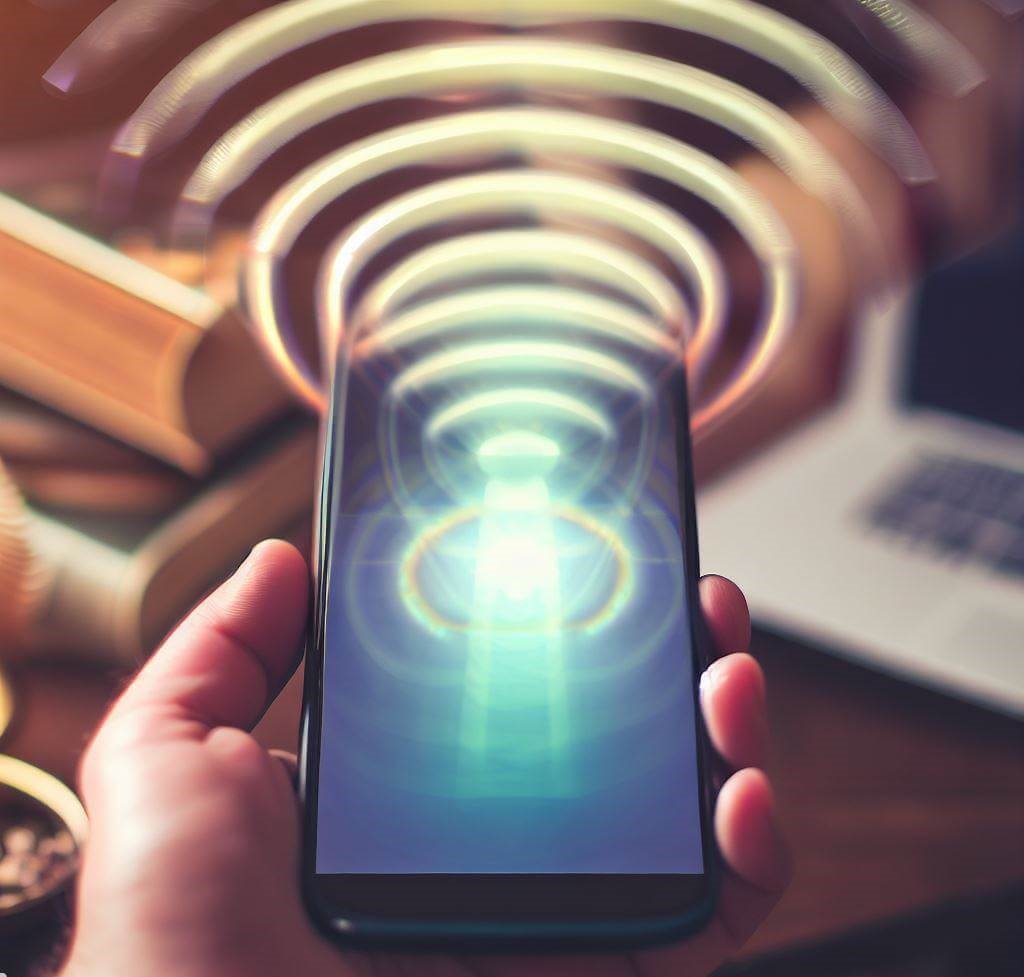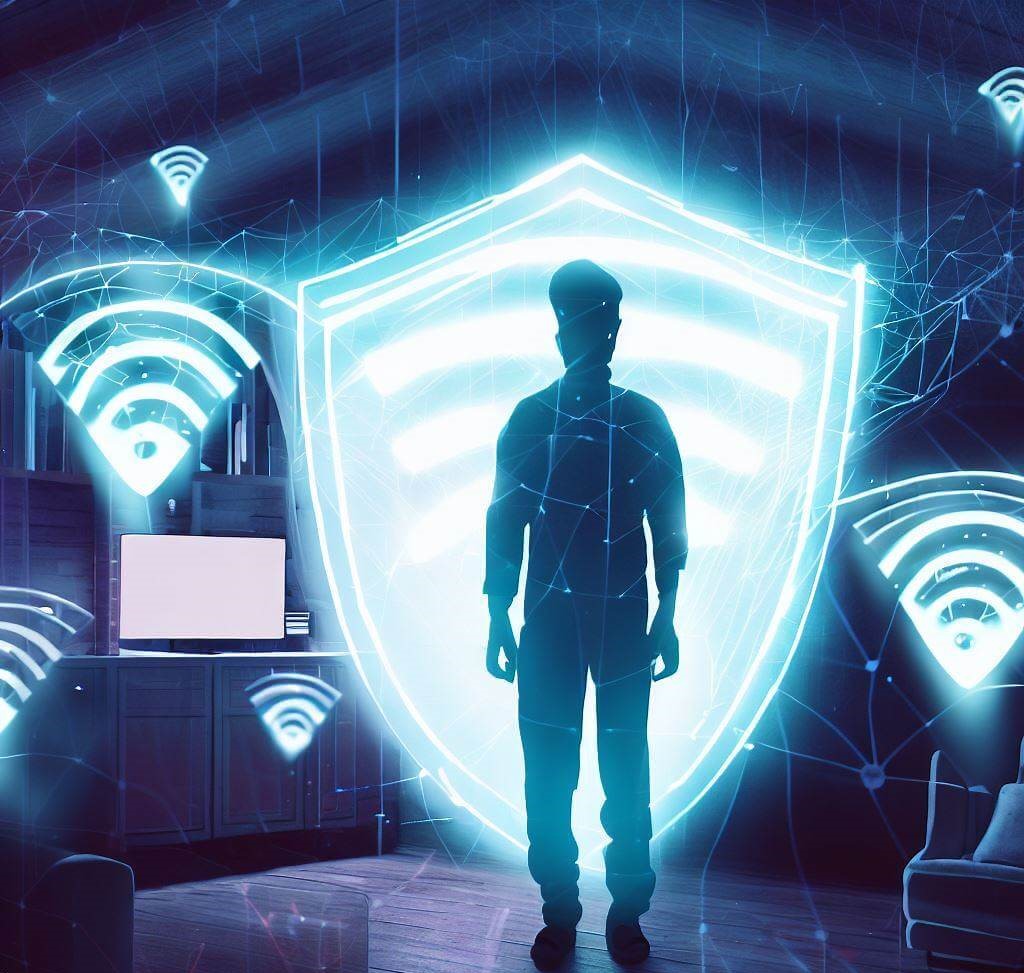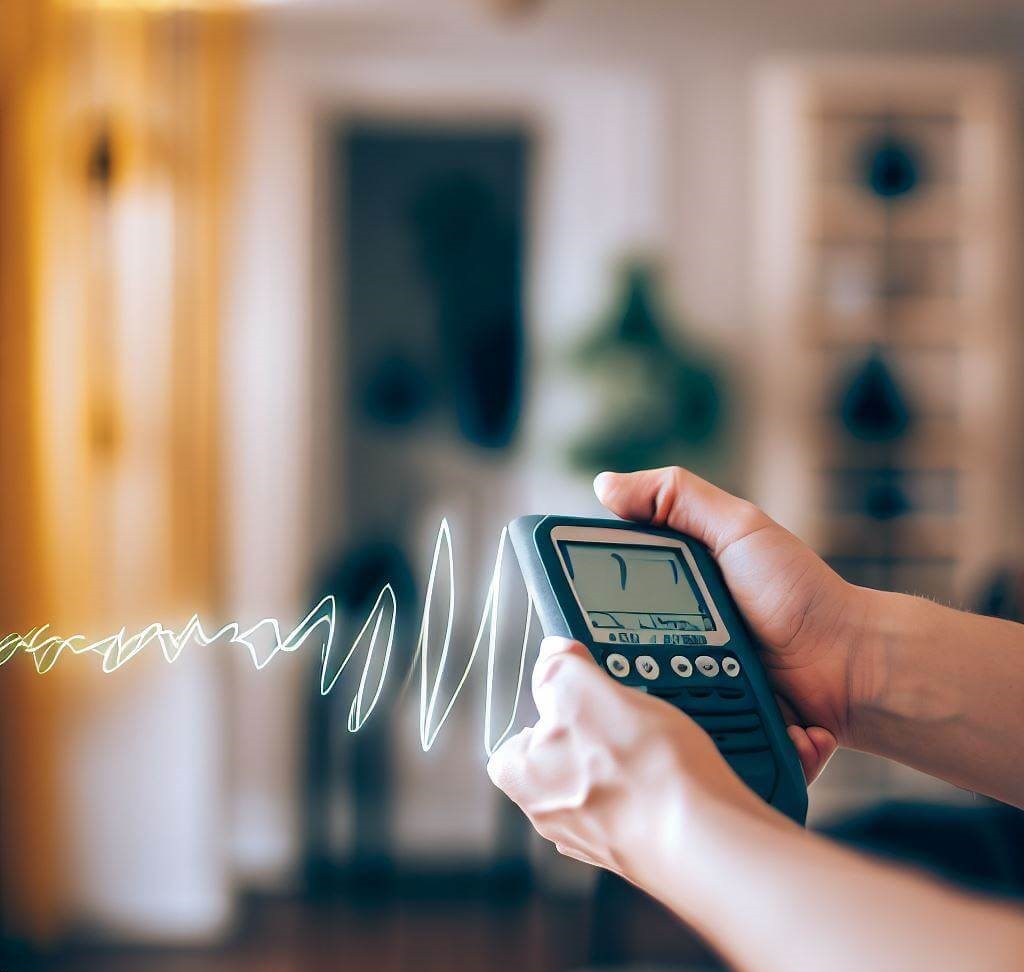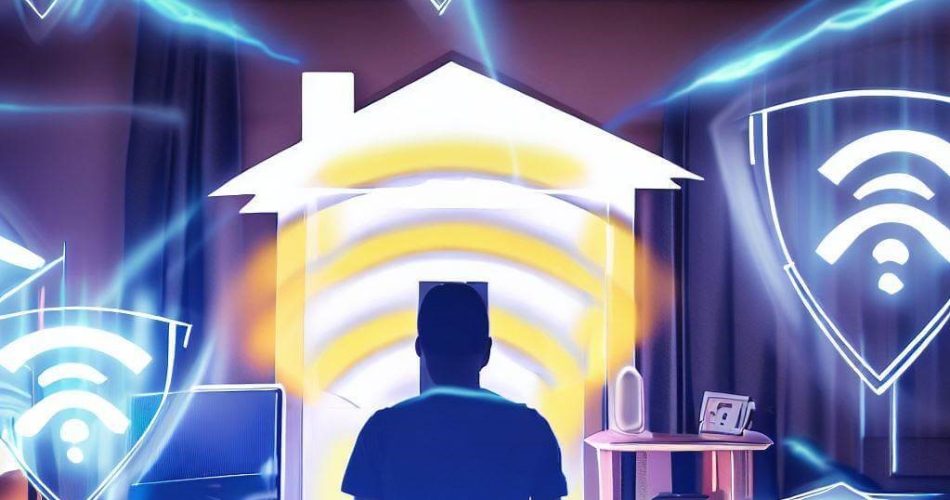Introduction
In our increasingly connected world, our reliance on technology continues to grow, enveloping us in an invisible web of electromagnetic fields (EMFs). While these EMFs are an inevitable byproduct of the devices and conveniences we’ve come to rely on, it’s important to remember that they can potentially impact our health. To navigate the invisible landscape of EMFs, you’ll need the right information and strategies. This article aims to shed light on EMFs, their potential health implications, and how you, as an individual, can protect yourself from excessive EMF exposure. As an enthusiast in the EMF Protection niche, I’m dedicated to providing you with knowledge that can help you make informed decisions about your interactions with technology in your day-to-day life.
Understanding EMFs
To begin with, let’s demystify what EMFs are. Electromagnetic fields (EMFs) are areas of energy that surround electronic devices. The World Health Organization (WHO) explains that the electric fields are created by differences in voltage and magnetic fields are created when the electric current flows. These energy fields may change in strength and frequency, depending on the device and how it’s used. For instance, an active microwave or cellphone can produce a higher-frequency field compared to a dormant one. EMFs are omnipresent in our modern lives, emanating from numerous sources such as cellphones, Wi-Fi routers, televisions, power lines, and even household appliances like toasters and refrigerators. Natural phenomena like thunderstorms and the Earth’s magnetic field also produce EMFs, adding to the all-encompassing web of electromagnetic energy we live in.
Health Implications of EMFs
EMFs, particularly those of higher frequencies, have been a topic of discussion in scientific circles due to their potential health effects. The International Agency for Research on Cancer (IARC), a branch of the WHO, classified radiofrequency electromagnetic fields as possibly carcinogenic to humans (Group 2B), based on an increased risk for glioma, a malignant type of brain cancer. Apart from the potential cancer risk, numerous anecdotal reports and some research studies suggest that high-level or long-term exposure to EMFs could lead to a variety of health issues.
These include, but are not limited to, sleep disturbances, headaches, depression, fatigue, cognitive disruption, and changes in the nervous system. It’s worth noting that many of these symptoms are also associated with a recently defined condition called Electromagnetic Hypersensitivity (EHS), in which individuals experience adverse health effects while using or being in the vicinity of devices that generate EMFs.
While these findings are concerning, it’s important to note that the research on EMFs’ health effects is still ongoing, and results can vary. For instance, while some studies suggest a possible link between EMF exposure and health issues, others have found no significant associations. This ongoing debate among scientists underscores the need for continued research and cautious interpretation of the existing data. Nonetheless, given the potential risks and the increasing pervasiveness of EMFs in our lives, it’s prudent to explore strategies to minimize unnecessary exposure.

EMF Protection Strategy #1: Limiting Exposure
One of the simplest and most effective ways to protect against EMFs is by limiting your exposure to them. Remember, the intensity of the EMFs decreases significantly as you distance yourself from the source. For instance, placing a little distance between you and your laptop or avoiding carrying your cellphone in your pocket can help reduce exposure.
It’s also a good idea to switch off electronic devices when they’re not in use, as even idle devices can generate EMFs. If you work from home, consider setting up your workspace as far from your Wi-Fi router as practical. During sleep, when your body is in its rest and recovery phase, it’s especially important to limit EMF exposure. Try to keep your bedroom free of unnecessary electronic devices and, if possible, switch off your Wi-Fi router overnight.
EMF Protection Strategy #2: EMF Shielding
Another effective strategy to protect against EMFs is the use of EMF shields. These come in various forms, including special clothing, paints, and even phone cases, all designed to block or reduce the strength of EMFs. They often contain materials such as silver, copper, or other conductive metals that can deflect electromagnetic radiation.
Before purchasing any shielding product, it’s important to do your research. Not all products are created equal, and some may be more effective than others. Look for reputable companies that provide clear information on the effectiveness of their products, ideally backed by independent testing.
Remember, while shielding can be an effective strategy, it is most effective when combined with other approaches such as limiting exposure and leading a healthy lifestyle.
EMF Protection Strategy #3: Living a Healthy Lifestyle
Maintaining a healthy lifestyle is a fundamental part of any strategy to protect against the potential effects of EMFs. A strong, healthy body is naturally more resilient to any external stressors, including EMFs. Here’s what you can do:
- Nutrition: A diet rich in antioxidants can help counteract the oxidative stress that some research suggests may result from EMF exposure. Fruits, vegetables, nuts, and seeds are all excellent sources of antioxidants.
- Exercise: Regular physical activity can help strengthen your body’s natural defenses and improve overall well-being, making you more resilient to potential health impacts from EMFs.
- Hydration: Water plays a vital role in helping the body deal with toxins and other stressors, so ensure you stay well-hydrated.
- Rest: Ensure you get adequate sleep, as it is during sleep that your body repairs and regenerates. As mentioned earlier, try to keep your sleep environment free from unnecessary EMF sources.
While EMFs are a ubiquitous part of our modern lifestyle, there are practical steps you can take to minimize exposure and safeguard your health. As we continue to understand more about EMFs and their impact on human health, maintaining an informed, balanced, and proactive approach is our best strategy for navigating the invisible landscape of electromagnetic fields.
EMF Protection Strategy #4: Monitoring EMF Levels
An important aspect of protecting yourself from EMF is knowing how much exposure you’re getting. This involves measuring the EMF levels in your home, workplace, and other frequently visited places. You can use an EMF meter, a device that measures the electromagnetic fields in your surroundings.
EMF meters can detect various types of radiation, including electric fields, magnetic fields, and radio frequency (RF) radiation. These devices are quite straightforward to use, and there are various affordable models available in the market. By regularly monitoring EMF levels, you can identify hotspots of high EMF exposure and take steps to mitigate them.
Another way to monitor your EMF exposure is to use EMF detection apps available on smartphones. While not as accurate as dedicated EMF meters, they can give a rough idea of your EMF exposure and are better than having no information at all.
EMF Protection Strategy #5: Advocacy and Education
Last but not least, one of the most effective strategies to protect against the potential health effects of EMFs is through advocacy and education. This means learning about the sources of EMF in our daily lives, understanding the potential health risks associated with them, and sharing this knowledge with others.
There are numerous credible online resources and organizations dedicated to educating the public about EMF and advocating for safer technologies. By being informed, we can make better decisions for our own health and that of our families, and contribute to broader societal changes.
We can also advocate for stronger regulations on EMF emissions from electronic devices and infrastructure. While current regulations are based on thermal effects (heating of tissues), there’s increasing evidence that non-thermal effects might also impact human health. Advocacy can help push for updated guidelines that take this emerging research into account.
Furthermore, we can encourage schools, workplaces, and local communities to adopt better practices to reduce EMF exposure. This might include creating low-EMF spaces, using wired internet connections instead of Wi-Fi where possible, and educating individuals about safe technology use.
In essence, safeguarding health in the face of EMFs involves a multi-faceted approach – limiting exposure, shielding, maintaining a healthy lifestyle, monitoring EMF levels, and advocating for better EMF standards and practices. With awareness and proactive measures, we can navigate the modern, technology-driven world more safely.

Understanding Your Personal EMF Exposure Risk
Before deciding on the right protection strategy, it’s crucial to understand your personal risk level. As mentioned earlier, the degree of EMF exposure varies depending on several factors. Personal habits such as the frequent use of Wi-Fi-enabled devices, living conditions like proximity to power lines or cell towers, and professional requirements for jobs in IT, aviation, or medical imaging industries can all increase exposure risk.
Performing an EMF audit of your home can be a good starting point. Identify the sources of EMFs in your living environment, such as Wi-Fi routers, digital meters, or household appliances. You might want to hire a professional to perform this audit, or you could use an EMF meter and do it yourself.
EMF Protection for Children
Children, due to their developing systems and higher absorption rates, are particularly susceptible to the effects of EMFs. For parents, this means taking extra steps to safeguard their kids. Consider limiting screen time and encourage outdoor play. Also, don’t allow them to sleep with electronic devices near their beds and consider using wired devices instead of wireless ones for their use. Remember to apply the same protective measures in areas outside of the home where your child spends time, like schools or friends’ houses.
Emerging EMF Protection Technologies
As the concerns surrounding EMF exposure grow, so too does the market for protection devices. New technologies are continuously being developed, promising to reduce exposure or neutralize the effects of EMFs. From pendants and stickers for your devices to whole-house systems, the range is broad and often confusing.
While some of these products show promise, they should be seen as part of an overall protection strategy rather than standalone solutions. It’s important to research any product thoroughly, examine the science behind it, and consider its efficacy claims critically.
The Importance of Regular Detoxification
Given that complete avoidance of EMFs is nearly impossible in today’s world, regular detoxification practices can help your body cope better with exposure. These can include activities that promote sweat, such as sauna sessions or intense physical workouts, as sweating helps eliminate toxins. Hydration, eating a nutrient-rich diet, and regular sleep are also critical for supporting your body’s natural detoxification processes.
Remember, every step taken towards minimizing EMF exposure, no matter how small, contributes to your overall well-being. With a balanced and informed approach, you can effectively navigate the invisible EMF landscape and safeguard your health.
Choosing the Right Strategy for You
Choosing the right EMF protection strategy for you will depend on your lifestyle, environment, and individual health concerns. Understanding your current levels of exposure is a crucial first step. Are you living near a cell tower or a power line? Do you spend significant time on electronic devices for work or leisure? Answering these questions will help you determine the areas where you need to focus your protection efforts.
If you’re exposed to high levels of EMFs due to your living conditions or work environment, investing in shielding solutions or moving to a less EMF-intensive location might be appropriate. On the other hand, if your exposure is primarily from personal electronic devices, limiting usage and using distance and off-time to reduce exposure may be more effective.
Your health status also plays a role. Individuals who are already experiencing symptoms of electromagnetic hypersensitivity might need to take more aggressive measures to limit their exposure. Those with compromised immune systems or chronic illnesses may also benefit more from comprehensive protection strategies.
Lastly, consider your personal comfort and lifestyle preferences. Some people might find it easy to limit their technology use, while others might struggle. The same goes for physical shielding solutions; some might find them convenient, while others might find them intrusive. The key is to find a balance between effective EMF protection and maintaining your quality of life.

FAQs
1. How can I measure my EMF exposure?
You can measure EMF exposure using an EMF meter. These devices can detect electric fields, magnetic fields, and radiofrequency radiation. There are also smartphone apps available that can provide a rough estimate of your EMF exposure.
2. What is EMF shielding?
EMF shielding involves using materials that can block or attenuate electromagnetic fields. This can include shielding paint, fabrics, and films for windows, as well as special clothing and bed canopies.
3. Can I reduce EMF exposure through my lifestyle?
Yes, leading a healthy lifestyle can help your body cope with EMF exposure. This includes eating a nutrient-dense diet, getting regular exercise, prioritizing sleep, and managing stress.
4. What’s the role of advocacy in EMF protection?
Advocacy can play a significant role in EMF protection by pushing for safer technologies and stronger regulations, as well as educating the public about the potential risks associated with EMF exposure.
5. Are there one-size-fits-all strategies for EMF protection? No, the best EMF protection strategy for you will depend on your individual circumstances, including your levels of exposure, health status, and personal preferences.

